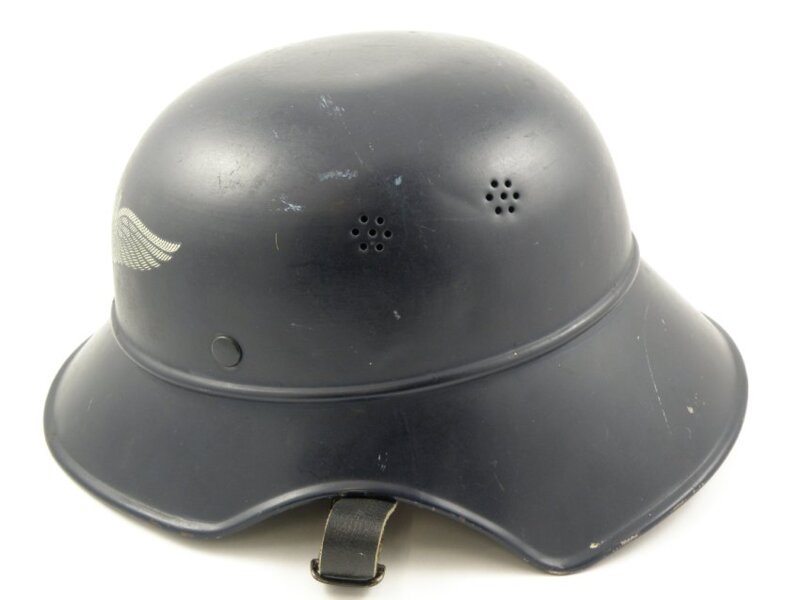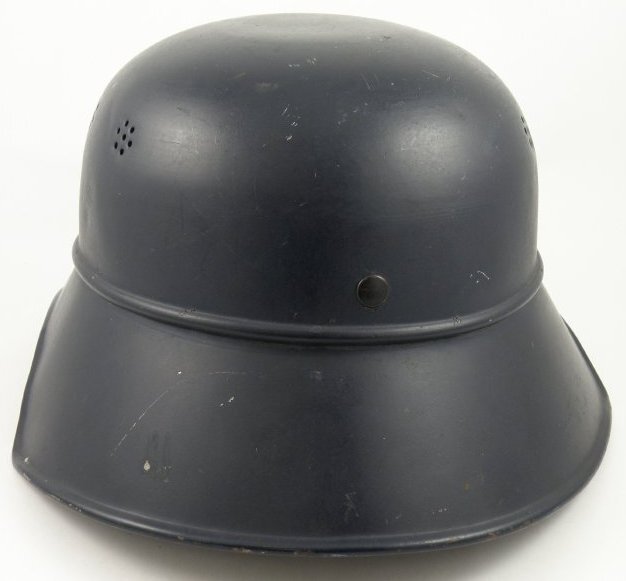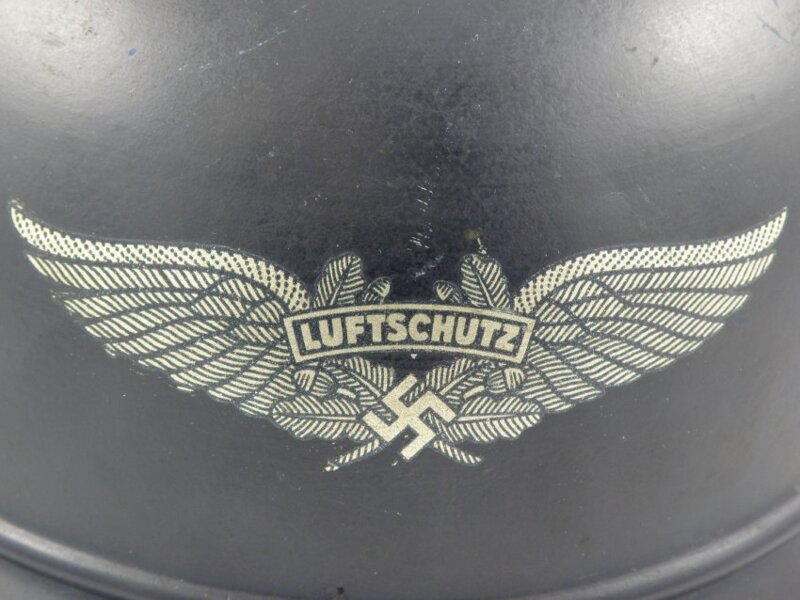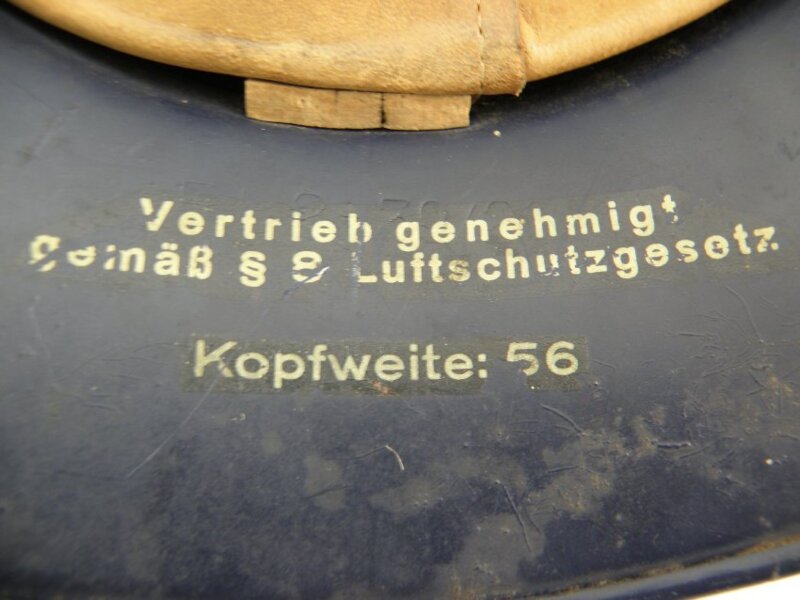Luftschutz Air Raid Warning Service Helmet
Item
Title
Luftschutz Air Raid Warning Service Helmet
Description
Luftschutz Air Raid Warning Service Helmet. Two piece gladiator style, dark bluish black in colour with two vents appearing on either side each holds an identical circular seven hole pattern. The Luftschutz Wing Decal appears on the front of the helmet, two outstretched wings behind a Swastika with the name Lufschutz floating above it and framed by four acorns. This civic model helmet with tan leather liner supported by three cork spacers is made up of eight fingers, one of which is stamped with the size description, 56. Each of these fingertips have a single small leather grommet on the inside of each drawstring hole for re-enforcement. An RB number, N19 or identification number which stands for the leather company that supplied the leather to the liner maker. The black leather roller buckle chinstrap is riveted directly to the sides of the liner band The leather liner backing material is wool felt which cushions the leather from the inner band. A descriptive gold lettered decal adhered underneath the back inner helmet brim reads, Vertrieb genehmigt gemäß § 8 Luftschutzgesetz Kopfweite: 56 Roughly translated, this phrase means, protector of the air laws, and the helmet head size, which is 56.
Date
Identifier
984.x.1473
Medium
Provenance
The Air Protection Police (Luftschutzpolizei-LSP) was an organization activated on 1 June 1942 whose purpose it was to organize and control air defense related activities throughout Germany. The Air Defense Police came about as a result of heavy Allied bombing attacks that eventually overwhelmed its predecessor organization, the Security and Assistance Service (Sicherheits und Hilfdienst-SHD). The Luftschutzpolizei fell within the full authority of the German Order Police (Ordnungspolizei), but by most accounts it is best regarded as Germany’s central air defense organization. Air defense conscripts were trained by the local chief of the Ordnungspolizie and fell under his overall jurisdiction. Most members were volunteers although many were likely former police officers now called upon for additional service time. Many period photographs clearly illustrate that the men who served in the Air Protection Police were middle-aged. Members of the Luftschutzpolizei worked closely with other organizations such as the Technical Emergency Corps (Technische Nothilfe-Teno), the Fire Protection Police (Feuerschutzpolizei), and the Air Protection Warning Service (Luftschutzwarndienst-LSW). Coordination between organizations was vital to the overall work of all units involved in air raid defense. Units were authorized to control the civilian population during air attacks, assist and provide medical and evacuation services with the German Red Cross (Deutsches Rote Kreuz), organize repair services for buildings, utilities, and transportation centers, decontaminate areas and conduct gas detection, care for wounded animals and livestock, assist with fire-fighting duties, and to provide rescue and ambulance services to victims of Allied bombing. Essentially, the Air Protection Police organization was Germany’s answer to a comprehensive need for a single air defense organization. Due to the nature of the work involved, members were required to have better head protection than what was generally provided by the standard Luftschutz gladiator helmets. Unit members typically wore dark blue M1935, M1940, and M1942 “beaded” combat helmets with standard police or Luftschutz insignia. The increased need for control during air raid attacks was one of the many factors which lead to the transfer of the organization to the Order Police (Ordnungspolizei-ORPO) umbrella.











